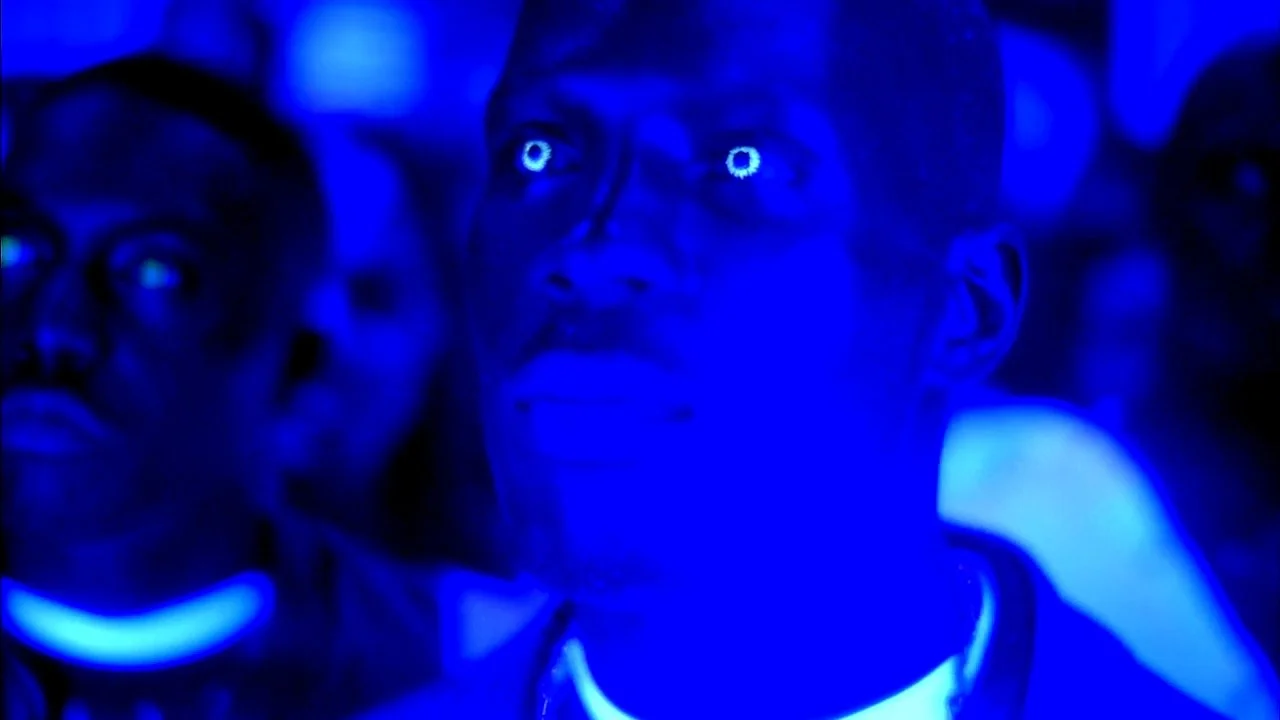'Belly' and Its Enduring Fashion Legacy: How Hip-Hop Cinema Redefined Streetwear
The Culture Crypt examines how the titular 1998 crime thriller revolutionised fashion by fusing streetwear with high-end luxury, setting the stage for today's thread-woven status quo.
When Belly premiered in the autumn of 1998, it forever changed the relationship between film, hip-hop culture, and fashion. Directed by music video visionary Hype Williams, the movie was a visual masterpiece that fused striking cinematography with a gritty narrative of ambition and identity.
What set Belly apart wasn't just its story but its fearless use of fashion as a storytelling device. The film blended high-end designer pieces with streetwear essentials, creating a fresh aesthetic that has shaped fashion for decades. Today, its legacy is unmistakable in modern fashion, with countless trends directly influenced by its bold style.
Set in 1999 Queens, New York City, Belly follows young street criminals Tommy "Buns" Bundy and Sincere "Sin" (played by rappers DMX and Nas, respectively), who are drawn into a violent nightclub robbery that leaves five dead.
As the story unfolds, Sincere begins questioning his life of crime while Tommy pushes forward with a dangerous drug operation. The film explores survival, betrayal, and the tension between ambition and redemption, all set against a backdrop of street culture and fast living.
One of the defining aspects of Belly was its ability to blur the lines between luxury fashion and streetwear. The characters seamlessly paired high-end designer labels like Versace and Gucci with everyday staples such as oversized hoodies and Timberland boots, creating a striking contrast that underscored the duality of their lives—aspiring to wealth and status while staying deeply connected to their roots.
Set in New York, a city grappling with stark economic inequality—where over 20% of residents lived in poverty, and the gap between rich and poor continued to widen—Belly mirrored these societal tensions with an unwavering gaze.
The film's fashion choices mirrored the era's aspirational attitudes and reflected the lyrical themes of its leading stars. DMX, fresh off the release of It's Dark and Hell Is Hot and on the cusp of Flesh of My Flesh, Blood of My Blood, detailed gut-wrenching street stories and survival struggles in a harsh world.
Meanwhile, Nas, with 1996's It Was Written, wove mafioso narratives that echoed the characters' ambitions caught between the streets and a yearning for wealth and power. This approach to fashion was ground-breaking at the time, challenging conventional style norms and setting the stage for the future fusion of luxury and streetwear.
It predicted the rise of collaborations between luxury brands and streetwear, like Supreme x Louis Vuitton and Adidas x Gucci, which dominate today's fashion industry. These partnerships exemplify the same fusion of style that Belly pioneered, proving its lasting influence.
The film's characters were more than players in a crime drama - they were style icons. DMX's character, Tommy "Buns" Bundy, embodied power and focus with his sleek, all-black outfits. Fitted turtlenecks, leather jackets and tailored silhouettes created a commanding presence that resonates in today's minimalist fashion trends.
Modern brands like Rick Owens and Balenciaga continue to draw from this aesthetic, offering streamlined designs that reflect confidence and sophistication. Everyday wardrobe staples such as black leather jackets and Chelsea boots owe much of their popularity to this style ethos.
In contrast, Nas' portrayal of Sincere represents introspection and a longing for a life beyond crime. His wardrobe featured neutral-toned sweaters, khakis, and understated outerwear that reflected his grounded personality. This understated luxury is a hallmark of brands like Aimé Leon Dore and The Row today. Modern consumers gravitate towards beige trench coats, wool overcoats and tonal tracksuits that echo Sincere's effortless and relatable look.
Belly-inspired selections from the Supreme 2021 F/W collection.Women's fashion in Belly was equally iconic. Taral Hicks' portrayal of Keisha brought glamour and strength to the screen. Her wardrobe, featuring form-fitting dresses and bold metallics, became a blueprint for modern eveningwear—designers like LaQuan Smith and Mugler channel this aesthetic with collections celebrating sensuality and confidence. Everyday fashion has also adopted these elements, with bodysuits, gold chain necklaces and metallic dresses becoming staples in people's collections.
The film's visual style also influenced fashion's use of reflective and futuristic textures. Hype Williams utilised neon lighting and metallic fabrics to create an otherworldly effect, elevating simple pieces into statement-making looks. This approach is reflected in modern fashion through brands like Off-White and Balmain, which incorporate reflective materials and shiny fabrics.
Items like metallic puffer jackets and iridescent sneakers directly nod to Belly's visual storytelling. Timberland boots, a staple in Belly, remain an enduring symbol of hip-hop culture. The film showcased these rugged, practical boots as a statement of style and identity, solidifying their place in fashion history.
Today, the resurgence of workwear-inspired fashion has brought brands like Timberland, Carhartt and Dickies back into the mainstream. Pairing these boots with wide-leg pants and oversized jackets reflects the effortless, powerful style seen in the film.
The most enduring legacy of Belly lies in its role as a catalyst for elevating streetwear to high fashion. The film boldly challenged conventional fashion norms by merging everyday street style with luxury elements, redefining style possibilities.
“This ground-breaking philosophy paved the way for designers like Virgil Abloh and Telfar Clemens, celebrated for their ability to fuse cultural authenticity with cutting-edge design. Today, modern trends—graphic hoodies, cargo trousers with premium detailing, and cross-body bags—bear the unmistakable imprint of Belly’s trailblazing aesthetic.”
At its core, Belly was more than a film; it was a cultural statement. Its bold use of fashion showcased the power of style to convey identity, ambition, and resilience. The movie celebrated Black culture and redefined how it was represented in cinema and fashion.
Over two decades later, Belly's influence remains as strong as ever. From runway collections to streetwear collaborations, its impact continues to shape the modern fashion landscape, proving that true style transcends time.
Stream or purchase Belly on Amazon Prime Video here.








